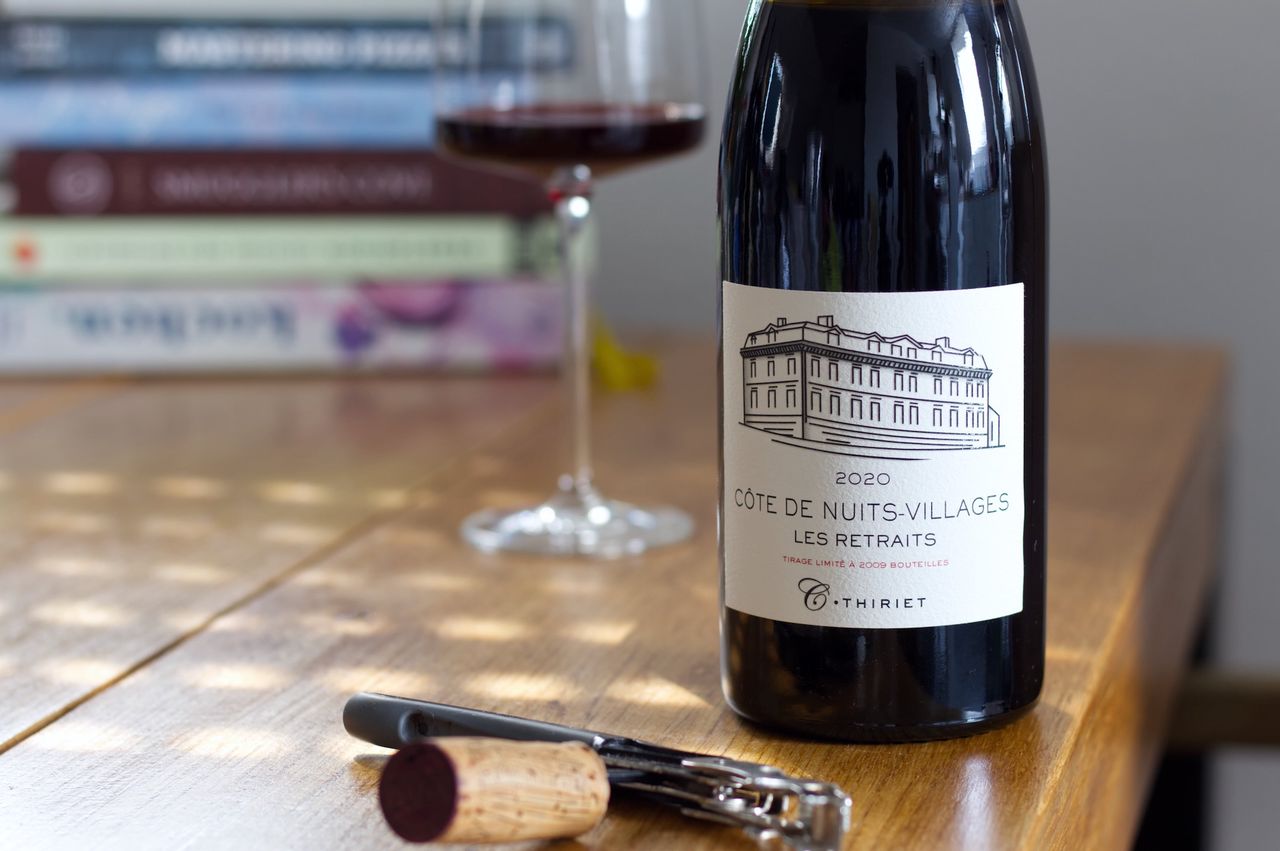Camille Thiriet - Les Retraits 2020
To conclude the virtual tour through Burgundy, we are drinking a bottle of Côte de Nuits Villages Les Retraits 2020 from Camille Thiriet.

One more bottle before we head back to explore wines from other regions. And since this is sort of a bonus, it doesn’t matter that geographically, we’re only moving a few steps away. In fact, it’s just a bit further down the road from last week’s vineyard, across the street. Not directly opposite, or it would be Premier Cru and Clos de la Maréchale, but practically right next door. However, that’s not important today. For me, this bottle is a one I waited for, one I had almost written off in my mind. We didn’t come across Camille Thiriet’s wines in France, but on the Mosel. At Mythos Mosel 2022, at the Lehnert-Veit winery, with what felt like 40°C heat, there was a long table with an incredible number of Pinot Noirs neatly lined up. A special Pinot Noir tasting. Among that illustrious lineup were the wines from Camille Thiriet, along with their cellar master Matt Chittick. If I remember correctly, Thiriet and Lehnert-Veit met in New Zealand at some point, which is how Burgundy ended up as a guest on the Mosel. It was a bit chaotic and very warm at that Pinot table. And yet, the wines stuck in my head. At least, until I saw the price tag. After that, they remained in my mind, but filed under “Nice to have tried”. Then a few weeks ago, they popped up in a newsletter sale, and I finally found a way to justify the purchase to my frugal Swabian soul.
Matt and Camille actually met in Burgundy and began making tiny amounts of wine from purchased grapes in 2016. Over time, they were able to buy a few vineyards of their own, but the 2020 vintage likely still comes entirely from purchased grapes. This isn’t unusual for more or less trendy micro-wineries in Burgundy. In 2020, only 2009 bottles of Les Retraits were produced. The whole grapes were spontaneously fermented, then aged in barrels with one-fifth new oak.
Right after opening, the wine is very berry-like, dark, with surprising resistance in the glass. There’s real energy behind both the acidity and the tannins. A few hours later, it calms down. The fruit becomes more refined, less intense, but still dark, more black than red. Yet, you can still catch some cherries among the dark berries, with some spice and a slight touch of earthiness. It’s an intense, dense, and somehow simply beautiful Pinot Noir. The roughness of the initial sips has completely subsided, but the power remains. The acidity is needed to tame the tannins lurking behind the fruit, only to spring off the tongue with an edge somewhere between underbrush and blackberry leaf. Fortunately, it’s one of those wines where you just want to keep your nose in the glass for hours. The length helps, so you can take smaller sips, making the wine last longer. Sip, sniff, sip. Blackcurrant, blueberry, cherry, and spices. The impression I had on the Mosel wasn’t misleading. This is truly excellent.
It gets even a bit better on the second day. Not drastically different, just better. Everything flows together more smoothly and becomes a little more intense. It gets earthier, more reminiscent of forest floor, and when you inhale, fruit, spice, and forest floor all move through your nose and into your mind. You really get the feeling that something is in motion. You smell, you sip, you smell again, and it’s flowed just a little bit further. The wine is complex and deep without being heavy or overbearing. This effortlessness, which has distinguished so many wines in the recent weeks, is again the driving force behind its greatness. Blackcurrant, blueberry, and as the evening progresses, plum and smoke. Together with the freshness and length in the mouth, it’s just a great mix. Once again, I’m relieved that my event-tasting self and my at-home self share the same taste buds, and that the experience matches. I remember why I wanted it after the Mosel tasting and am glad I’ve now experienced it in full. This wine will have many more years ahead of it in the bottle, likely improving further. I don’t regret drinking it now, and I mentally file it back into the spot in my mind it had already found. It was nice to have tried it. The bottle will linger in my thoughts for a while. A true Burgundy, from Burgundy itself, yet one that transports you with every sip to an early summer day on the Mosel, that’s not something you have in your glass every day. I’m glad it was there.